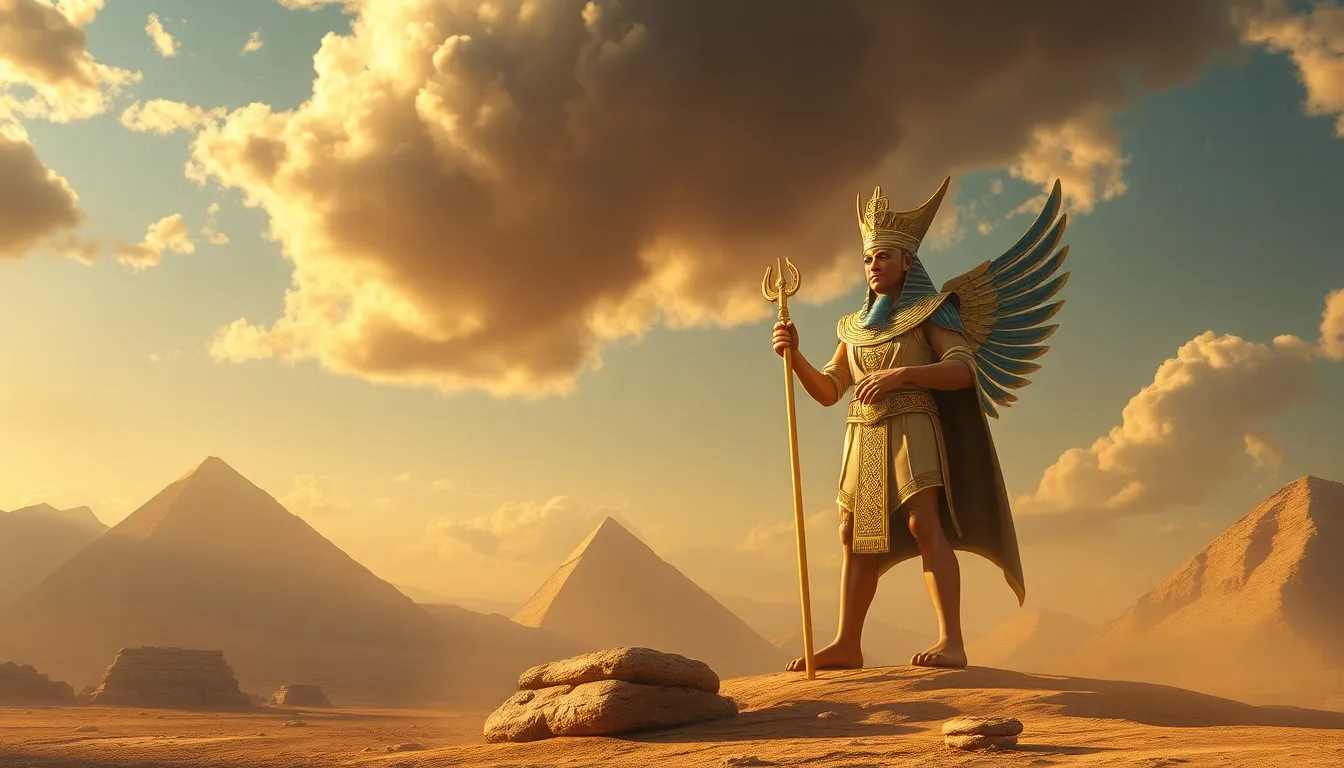The Role of Divine Kingship in Egyptian Mythology
I. Introduction
Divine kingship in ancient Egypt refers to the belief that the pharaoh was not only a political leader but also a divine figure, an intermediary between the gods and the people. This concept was deeply embedded in the social, political, and religious fabric of ancient Egyptian civilization.
The importance of divine kingship can be seen in how it shaped the identity of the pharaoh, legitimized their authority, and reinforced social order. The pharaoh was viewed as a living god, responsible for maintaining Maat, the cosmic order, and ensuring the prosperity of the land.
This article will explore the historical context of divine kingship, the representation of the pharaoh as a divine figure, the rituals and ceremonies that reinforced this status, the symbolism and iconography associated with it, the relationship between divine kingship and the afterlife, challenges faced by divine kingship, and its lasting significance.
II. Historical Context of Divine Kingship
The origins of divine kingship can be traced back to the predynastic period in Egypt, where early rulers were already regarded as possessing divine attributes. Over time, this belief evolved through various dynasties, solidifying the pharaoh’s status as a god-like ruler.
- Predynastic Egypt: Early kings were seen as gods who controlled the forces of nature.
- Old Kingdom: The concept became more formalized, with the pharaohs building pyramids as monumental tombs, reflecting their divine status.
- Middle Kingdom: The idea of the pharaoh as a shepherd of the people emerged, emphasizing their role in governance and protection.
- New Kingdom: Pharaohs like Ramses II and Tutankhamun were depicted as divine warriors and builders, further reinforcing their godly image.
Notable pharaohs, such as Narmer, who unified Upper and Lower Egypt, and Akhenaten, who attempted to shift worship to a single deity, illustrate the varying interpretations and expressions of divine kingship throughout Egyptian history.
III. The Pharaoh as a Divine Figure
The pharaoh was often depicted as a god on earth, embodying both human and divine characteristics. Mythological stories played a crucial role in shaping the narrative of the pharaoh’s divinity.
- Horus: The pharaoh was considered the earthly manifestation of Horus, the sky god, symbolizing kingship and protection.
- Osiris: The connection to Osiris, the god of the afterlife, emphasized the pharaoh’s role in resurrection and eternal life.
Mythological narratives often depicted the pharaoh engaging in divine acts, such as defeating chaos or performing miracles, reinforcing their status as a divine entity and protector of Maat.
IV. Rituals and Ceremonies of Divine Kingship
Rituals and ceremonies played a vital role in affirming the divine status of the pharaoh. These events were often elaborate and involved the participation of priests and religious institutions.
- Coronation Ceremonies: These ceremonies marked the official assumption of power by the pharaoh and included rituals that symbolized their divine right to rule.
- Sed Festival: A significant celebration held every 30 years, the Sed Festival reaffirmed the pharaoh’s vitality and commitment to Maat.
The involvement of priests in these rituals was crucial, as they acted as intermediaries between the gods and the pharaoh, ensuring the proper conduct of ceremonies to maintain cosmic balance.
V. Symbolism and Iconography of Divine Kingship
Artistic representations of the pharaoh in temples and tombs were imbued with symbolism that conveyed their divine nature. Iconic symbols associated with divine kingship included:
- The Crook and Flail: Representing the pharaoh’s role as a shepherd of the people and a ruler who maintains order.
- The Ankh: Symbolizing life and immortality, often depicted in the hands of the pharaoh.
Hieroglyphs and inscriptions were also used to proclaim the pharaoh’s divine authority, often detailing their accomplishments and divine lineage, reinforcing their status as a living god.
VI. The Relationship Between Divine Kingship and the Afterlife
The pharaoh’s role in ensuring cosmic order, or Maat, extended into the afterlife. The belief in the pharaoh’s death and resurrection was central to Egyptian religion.
- Maat: The pharaoh was seen as the embodiment of Maat, responsible for maintaining balance and harmony in the universe.
- Death and Resurrection: The pharaoh’s journey to the afterlife was viewed as a continuation of their divine role, ensuring the well-being of the land even after death.
The construction of monumental tombs and pyramids was a manifestation of divine kingship, designed to facilitate the pharaoh’s passage to the afterlife and to serve as a lasting testament to their divine authority.
VII. Challenges to Divine Kingship
Despite its significance, divine kingship faced various challenges throughout Egyptian history. Historical instances of usurpation and rebellion against pharaonic authority illustrate the vulnerabilities of this concept.
- Usurpation: Instances where rival factions or individuals attempted to claim the throne, challenging the divine right of the ruling pharaoh.
- Foreign Rule: Periods of foreign domination, such as during the Hyksos invasion, disrupted traditional beliefs surrounding divine kingship.
- Changing Religious Beliefs: Over time, transformations in religious beliefs and practices, such as the rise of the cult of Osiris, altered perceptions of the pharaoh’s divine status.
VIII. Conclusion
In summary, divine kingship was a cornerstone of Egyptian mythology, intertwining the concepts of divinity and rulership. It shaped the identity of the pharaoh and played a crucial role in maintaining social order and religious practices.
The influence of divine kingship continues to resonate in modern interpretations of ancient Egypt, reflecting the complexities of power, divinity, and humanity. The interplay between divinity and rulership in ancient cultures provides valuable insights into the foundations of civilization and the enduring legacy of belief systems.




